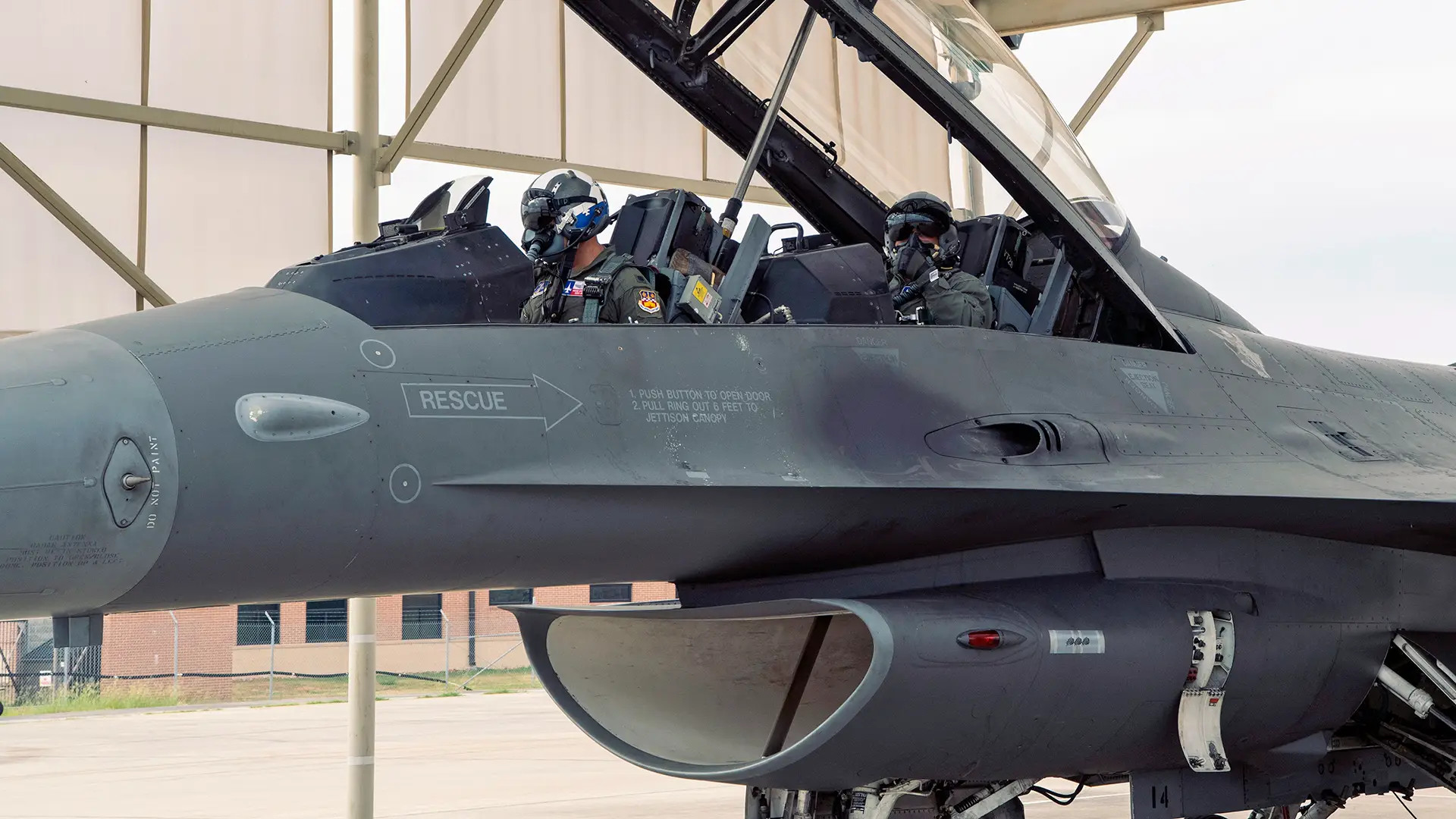While it had been hoped that the first Ukrainian pilots might be qualified to fly F-16 Viper fighters by early next year at the latest, that is now reportedly when they are expected to start training. The goal is now to have the first of Ukraine’s aviators ready to take the stick of an F-16 sometime next summer.
The Washington Post first reported on the delay earlier today, citing two anonymous Ukrainian officials. Concerns over English language proficiency and a shortage of F-16 trainers in Europe are cited as the reasons for the schedule slip.
F-16 training is now likely won’t begin until January, according to the Post. As a result, the first group of six pilots is not expected to complete that training until the summer of 2024. As The War Zone previously reported, a plan had been in place to start training Ukrainian pilots on how to fly the F-16s this month in Denmark, and at a training center that will be set up in Romania.
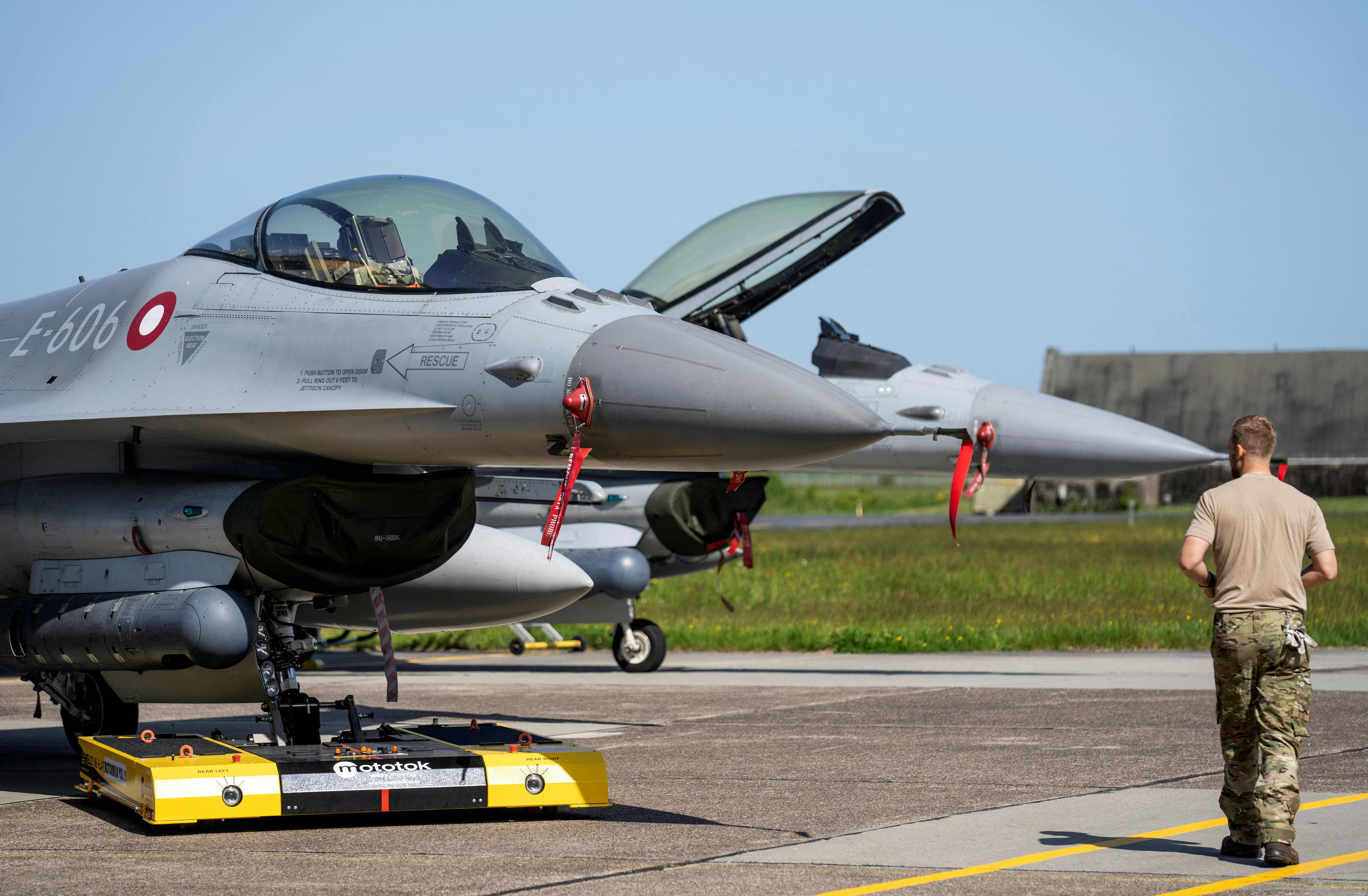
The initial group of Ukrainian pilots are already fluent in English, but they must first attend four months of English lessons in Britain to learn terminology associated with the jets, the sources told the Post. Adding to the complications, that instruction will occur along with ground staff who may be less proficient in English. The Ukrainians told the newspaper that the schedule is being comingled because Denmark requested to train entire crews together rather than just the pilots first. Denmark’s Defense Ministry reportedly declined to comment.
This all pushes back the start of combat training, which is expected to take six months, to January, the Ukrainian officials said, according to the report.
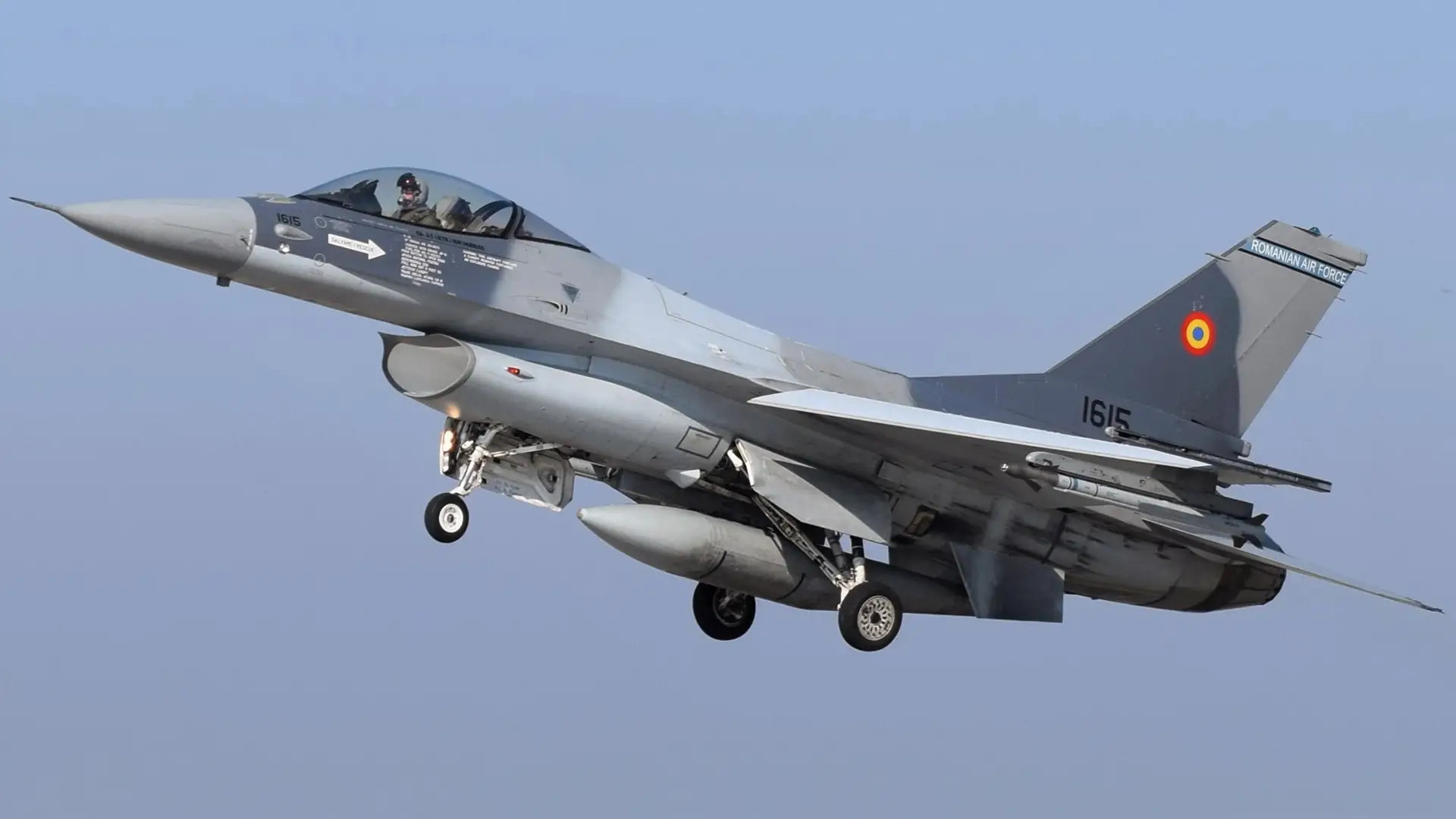
However, U.S. officials told the Post that Ukraine shares responsibility for the training delay, saying it had only recently provided a list of pilots ready to be trained in an inaugural cohort. Of 32 pilots given English proficiency exams, only eight were assessed as having adequate language skills, a U.S. official told the publication. The rest would require more instruction.
Any delays in the initial group of Ukrainian pilots starting F-16 training could impact subsequent cadres as well, potentially creating a cascading effect. A second group of aviators from Ukraine, about the same size as the first, is reportedly set to be ready six months after the first, or roughly the end of next year now.
A Baseline Pilot Assessment (BPA) that the Air Force conducted of two Ukrainian pilots who attended simulator training in the U.S. earlier this year, which we wrote about in May, highlighted a lack of English language skills as a concerning issue, especially when it came to the Ukrainian pilots being able to read instruments and displays.

But the English skill level of either pilot from Ukraine is unclear, as is how much of the assessment may have been conducted with the help of interpreters.
The BPA does note “there was noted improvement of English aptitude over the two-week assessment.”
The report concluded that based on the pilot’s skills and the need to train them quickly, a “specialized syllabus only focused on min required tasks” could be developed in about four months.
But whether that’s enough to be combat relevant in Ukraine in an F-16 still remains. Some of these extra modules could be added at the expense of time though.
The leaked BPA assessment, first reported by Yahoo News, is very close to the training schedule estimates that F-16 pilots provided to The War Zone for a feature published back in February.
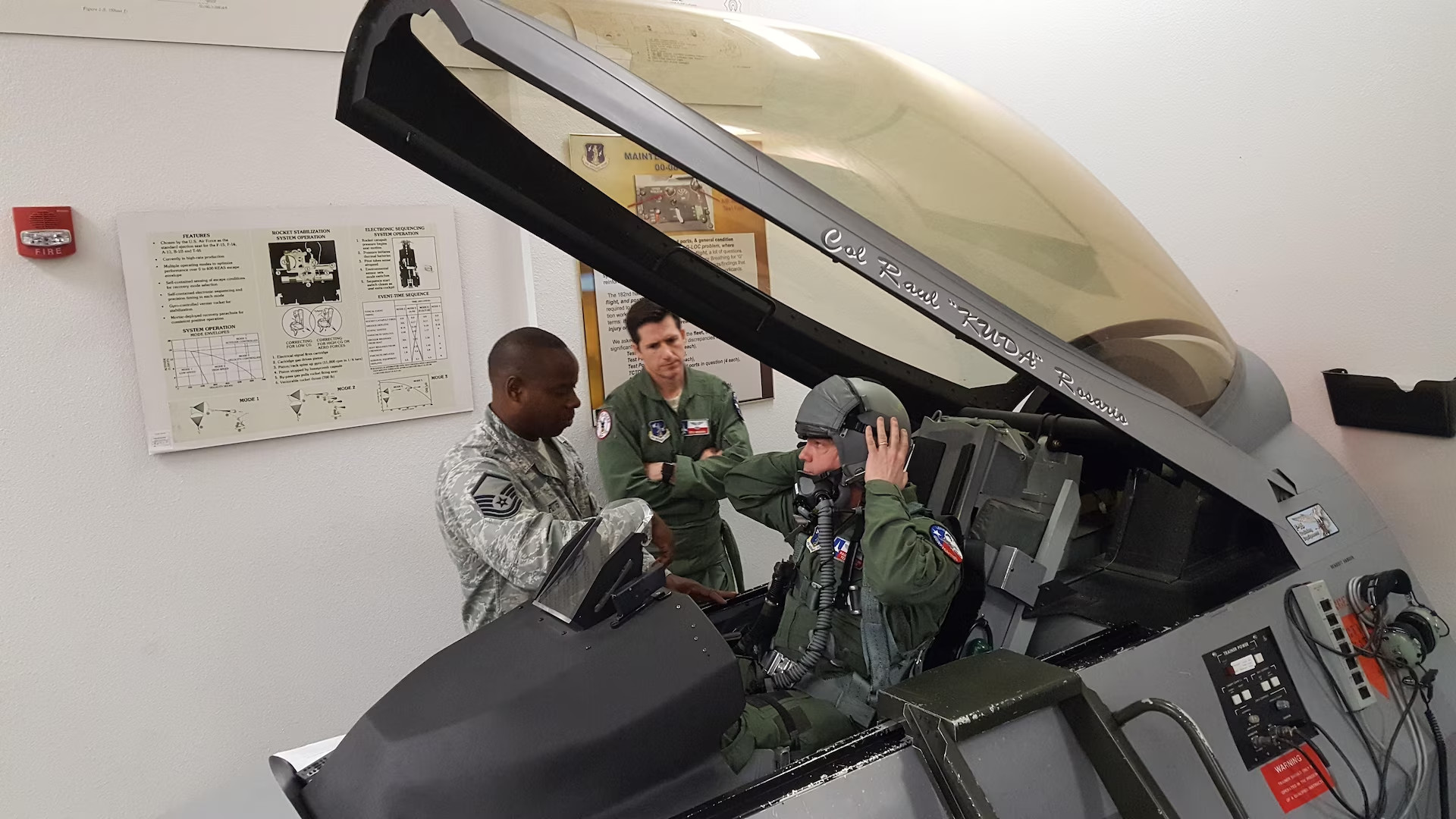
“This is called dragging it out,” one Ukrainian official told the Post. Both Ukrainian officials said they were reluctant to be too critical of their U.S. and European benefactors for fear of appearing ungrateful.
In addition to language training, a spokesman for the Dutch Defense Ministry told the Post that a key challenge is the shortage of F-16 trainers in Europe. The Netherlands, for instance, is in the process of transitioning to the more advanced F-35 and has switched the focus of its training away from F-16s.
“To train a fighter pilot you also need fighter pilots,” Dutch Lt. Col. Mark van de Beek said, according to the report. “That is expensive and a capability that smaller countries don’t have much anymore.” He stressed that training someone to fly an F-16 in combat is a complex task that must proceed step by step. He compared it to learning to drive a car — “first you need to operate the lights and blinkers” he said, “then, you drive it in a parking lot.”
But the final step, he added, will be combat training.

The White House on Friday maintained it remains interested in training Ukrainians on the jets, a plan on which it has to sign off. But the process will take time, National Security Council spokesman John Kirby said Friday.
“The reason we’re doing this is part of a longer, broader effort to make sure that we are continuing to improve Ukrainian self-defense and military capabilities for the long term,” Kirby said, according to CNN. “It’s going to be a while before the jets can show up in Ukraine, and for them to be integrated into the air fleet.”
The Biden administration is for the first time signaling its willingness to conduct the F-16 training on American soil, the Post reported.
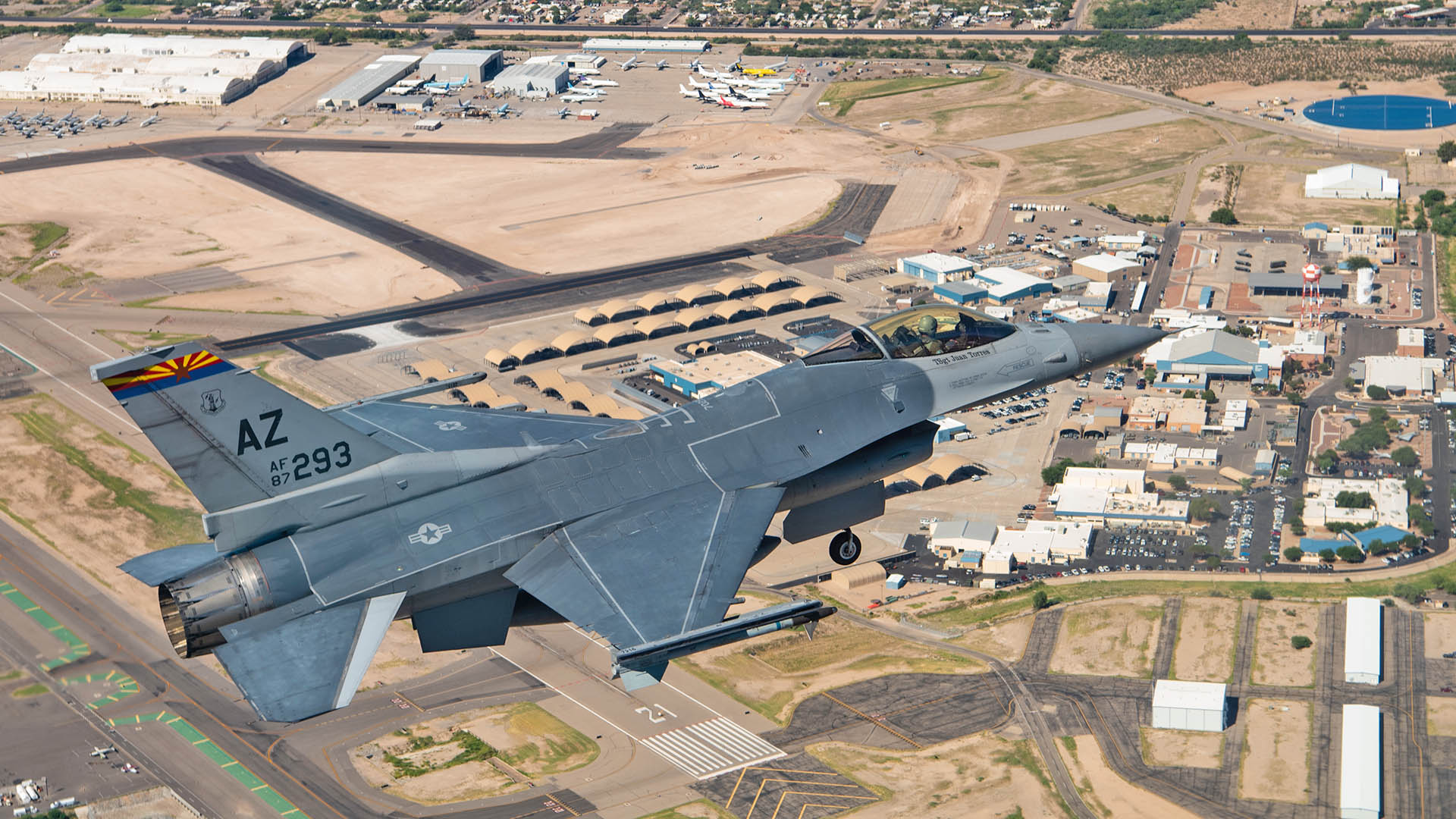
“Washington would be prepared to bring the aviators to the United States, where the Air Force trains some 400 F-16 pilots a year, if European capacity proves insufficient to meet Ukrainian demand,” according to the newspaper, citing an anonymous U.S. official.
The news about the schedule shift also comes as Ukraine is already facing a training challenge. While another 20 pilots are ready for English training to get them into the pipeline, U.S. officials told the Post that most of Ukraine’s best pilots are expected to remain in Ukraine, where they are tasked with missions involving firing French SCALP and British Storm Shadow air-launched cruise missiles. You can read more about how Su-24 Fencers have become Ukraine’s carriers for both of those missiles in our story here.
The latest news about F-16 pilot training is quite a turnaround from the optimism expressed exactly one month ago by a smiling Ukrainian Defense Secretary Oleksii Reznikov, who tweeted out that a formal agreement with 11 nations had been signed to train pilots, maintainers, and support staff on how to operate F-16s.
Ukraine has long been seeking more modern Western combat jets. Its current fighter fleet consists of aging Soviet-designed Su-27s and MiG-29s. A Ukrainian MiG-29 pilot, known by his callsign Juice, has told The War Zone on multiple occasions that F-16s would offer better radar capabilities and weapon options. You can read more about how any Vipers heading to Ukraine could be armed here and about where they might come from here.
Ukraine has already expressed frustration at not being given more advanced aircraft in the past. In June, Gen. Valery Zaluzhny, Ukraine’s commander-in-chief, pointed criticized Western partners for expecting Ukrainian forces to conduct a large-scale counteroffensive without modern air power.
Ukrainian troops on the front lines meanwhile have said that low-flying Russian helicopters like Ka-52 Alligators have been successful in attacking their ground forces in part because Ukraine is unable to threaten them in kind. You can read more about that threat in our story here.
While Ukrainians like Zaluzhny and President Volodymyr Zelensky are calling for F-16s as soon as possible, the U.S. military has argued that Kyiv has more pressing requirements.
In May, Gen. Mark Milley, Chairman of the Joint Chiefs of Staff, said Ukraine instead needs ground-based air defenses as the best and quickest way to deny Russia air superiority over Ukraine. The United States and allies and partners have provided a number of ground-based air defense assets to the Ukrainian military, including surface-to-air missile systems like Patriot, the National Advanced Surface-to-Air Missiles System (NASAMS), IRIS-T, SAMP/T, Hawk, Aspide/Skyguard, and Crotale, as well as Gepard self-propelled anti-aircraft guns.
Cost is another huge factor weighing against providing Ukraine with F-16s, Milley argued. Just 10 F-16s would cost $2 billion in procurement and sustainment, he said.
“The Russians have thousands of fourth- and fifth-generation fighters,” said Milley. “So, if you’re going to contest Russia in the air, you’re going to need a substantial amount of fourth- and fifth-generation fighters. If you look at the cost curve and do the analysis, the smartest thing to have done is exactly what we did do, which is provide a significant amount of integrated air defense to cover the battlespace and deny the Russians the airspace. And that is exactly what happened.”
Meanwhile, as the future training of Ukrainian pilots gets pushed further into the future, the Ukrainian Air Force said Russia launched a Kinzhal air-launched ‘hypersonic’ ballistic missile attack Friday against an airfield where pilots selected for F-16 training are based.
Around 10 a.m. local time, Russia launched four Kinzhals from four Russian MiG-31K Foxhound fighters flying in the airspace of the Tula and Lipetsk regions of Russia, the Ukrainian Air Force said Friday on its Telegram channel. The Kolomyia air base in the Ivano-Frankivsk region appeared to be one of the targets, the Ukrainian Air Force said. Three of those missiles landed near the air base, according to the Ukrainian Armed Forces General Staff Facebook page.
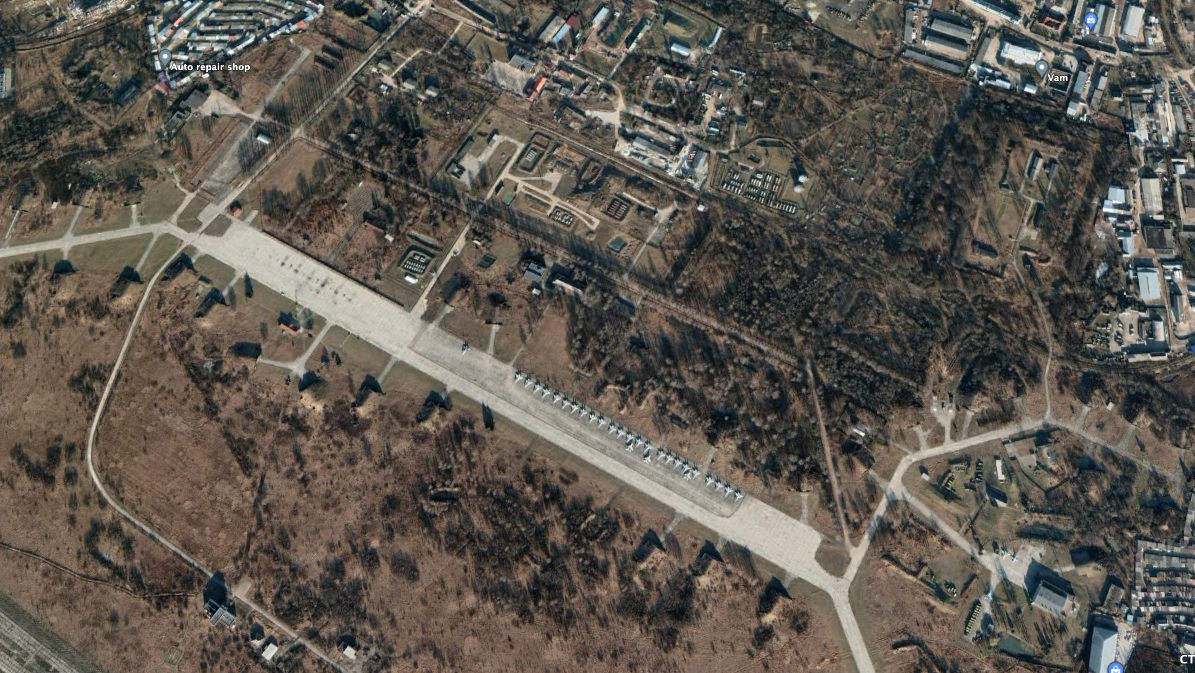
Ukrainian Air Forces spokesman Col Yuriy Ignat “suggested the attack had been aimed at Ukrainian pilots who were about to travel to the West to train to use F-16 fighter jets that Kyiv hopes will eventually be delivered,” Reuters reported.
“They (the pilots) will be trained on new equipment – the F-16 – and the enemy wanted to strike our young people, depriving us of the prospect of using the new Western equipment,” he said on television, according to Reuters.
“This time our youth was targeted,” Ignat said, according to CNN. “Our young pilots who will soon go for training.”
Ignat claimed Russia “wanted to hit our youngsters, depriving us of the prospect for our further re-equipment with the latest Western technologies. But as we see they did not succeed in this.”
The War Zone could not immediately independently verify any damage at the air base.
The attack did, however, prove fatal. An 8-year-old boy was playing in his yard when he was hit by shrapnel during the attack in the Ivano-Frankivsk region. Emergency personnel tried to him, but were unsuccessful, Svitlana Onyshchuk, Head of Ivano-Frankivsk Oblast State Administration said on her Telegram channel Friday. There were others who were injured and survived, she added.
It is a given that Ukraine will continue to seek more modern fighters, especially with the pace of its counteroffensive as it is. At the same time, while it is important to get the pilot pipeline going as soon as possible, with no concrete plans yet to provide actual F-16s to Ukraine, the actual impact of any training delays remains to be seen.
This is an important issue that will continue to monitor and update when warranted.
Before we head into the latest news from Ukraine, The War Zone readers can catch up on our previous rolling coverage here.
The Latest
Reports say that Ukraine continues to push south in its counteroffensive, with the town of Roboytne being fiercely fought over. Russia is said to be continuing to threaten the Kharkiv Oblast town of Kupiansk, where a mandatory evacuation is underway. The bloody fight for the Bakhmut area continues, as well.
Here are some key takeaways from the latest Institute for the Study of War assessment:
- Ukrainian forces continued counteroffensive operations on at least three sectors of the front and advanced in the area between the Donetsk-Zaporizhia regions on August 10.
- Russian forces conducted offensive operations along the Kupyansk-Svatove-Kreminna line, near Bakhmut, along the Avdiivka-Donetsk City line, the border between the western Donetsk and eastern Zaporizhia regions, and in the western Zaporizhia region on August 10 and made some advances.
- Ukrainian forces continued counteroffensive operations on at least three sectors of the front and advanced in the border area between the western Donetsk and eastern Zaporizhia regions on August 10.
One of the four Kinzhal missiles heading to western Ukraine was shot down over Kyiv, authorities there said Friday. There were no injuries, but it caused some damage across the city, according to its mayor.
Debris from the missile reportedly landed near one of the capital’s children’s hospitals, and two more crash sites were found in the Obolon district, Kyiv Mayor Vitalii Klitschko said on his Telegram channel Friday.
There was another attempted Ukrainian drone attack on Moscow on Friday that temporarily closed one of its airports, Russian officials said. Unlike the Russian missile strikes on Ukraine, no one was said to have been killed or injured and the drones did not seem to cause any serious damage. This would be the third drone attack on the capital, according to Russian authorities in just a few weeks. This comes a day after a number of airports were shut down temporarily, reportedly over concerns about a drone in Moscow airspace.
“As a result of the air defense work, it was eliminated,” Moscow Mayor Sergei Sobyanin said Friday on his Telegram channel of the reported drone attack today. “No one was hurt when debris fell in the area of Karamyshevskaya embankment. There are no serious damages. Emergency services are on site.”
Video and images of a drone flying over the city and a smoke plume from its apparent crash emerged on social media.
From what can be seen, this drone may have been a Ukrainian–developed type named Bober (meaning Beaver), which you can read more about here. This uncrewed aircraft, which has a distinctive configuration with canards on either side of its nose, was also apparently used in the July 24 raid on Moscow as well as in the earlier multi-drone attack on the Russian capital on May 30.
The explosion resulting from its crash was captured on video during a broadcast of the Russian Rowing Championships.
Moscow’s Vnukovo airport – as well as Kaluga airport about 95 miles southwest of the capital – were temporarily closed, according to the Russian Federal Air Transport Agency (FATA) Telegram channel.
FATA said three flights were diverted to Domodedovo airport, just south of Moscow.
This was the second time in as many days that Vnukovo saw flight restrictions. Both that and Domodedovo airport were affected yesterday after what local media said was the enactment of the so-called “Carpet Plan” designed to address potential threats posed by unidentified aircraft or objects, like drones, in the sky.
Egypt is balking at sending weapons to Ukraine, The Wall Street Journal reported Friday. The U.S. government asked its Egyptian counterparts to supply artillery shells, antitank missiles, air-defense systems, and small arms for Ukraine, the paper reported, citing a U.S. official.
“In conversations with U.S. officials, Egypt hasn’t definitively rejected the requests, but Egyptian officials said privately that Egypt has no plans to send the weapons,” the Journal reported.
Egypt is resisting requests from senior U.S. leaders to send them to Ukraine, Egyptian and American officials told the Journal. That is posing an obstacle for the Biden administration’s push to generate arms for the Ukrainian counteroffensive.
Cairo was initially going to send rockets to Russia but dropped that plan under pressure from the U.S. earlier this year, the officials told the Journal. This was first reported earlier this year. U.S. officials, including Secretary of Defense Lloyd Austin, asked Egypt to supply weapons to Ukraine instead, seeking to help the Ukrainian government overcome an ammunition shortage.
Austin made the initial request in March when the secretary of defense met Egypt’s president, Abdel Fattah Al Sisi, in Cairo. Egypt’s leaders were noncommittal at the time, and senior U.S. officials have raised the request in multiple encounters since then, the officials said.
The U.K. Defense Ministry on Friday released a video of the training it provided for 1,000 Ukrainian Marines on riverine operations, including commando raids and amphibious incursions. That’s something that has become increasingly important as Ukraine continues to send small units across the Dnipro River into Russian-occupied Kherson Oblast.
Citing concerns with corruption at recruiting centers known as “military commissariats,” Ukrainian President Volodymy Zelensky announced he is dismissing all the existing leaders and replacing them with troops who have returned from the front.
There are already 112 criminal proceedings against officials of those commissariats, Zelensky said Friday on his Telegram channel, with another 33 suspected cases.
“This system should be run by people who know exactly what war is and why cynicism and bribery during war is treason,” Zelensky said. “Instead, soldiers who have passed the front or who cannot be in the trenches because they have lost their health, lost their limbs, but have preserved their dignity and do not have cynicism, are the ones who can be trusted with this equipment system.”
According to the Kyiv Post, these commissariats were created for “preparation and mobilization; management of human and economic resources; training of young individuals for military service; organization of conscription and training sessions; and facilitation of voluntary enlistment for military service.”
Several mobile medical support complexes were transferred by the Netherlands to the Ukrainian State Border Guard Service.
“Their use allows to build a system of medical and evacuation support of the State Border Guard Service according to the standards of medical services of NATO countries,” the service announced on its webpage.
Ukraine’s 26th Brigade compiled videos showing what it claims were four Russian tank kills by its First Person Video (FPV) drones. However, at least one of the tanks in the video is seen still moving, though smoke is pouring out the back.
The Russian tank in the video below appears to have fallen off a cliff in the course of the fighting. Seemingly immobilized, it was a sitting duck for this Ukrainian FPV drone.
While there is a lot of FPV drone footage that comes of the conflict in Ukraine, rarely is it as crisp as that seen in this Russian attack on a Ukrainian sheltered position near Robotyne in Zaporizhzhia Oblast, posted by the Archangel of the Special Forces Telegram channel.
Many who see this FPV drone videos point out their resemblance to video games. That’s exactly the point, says this Ukrainian FPV drone operator, who says his gaming experience has helped him in this new role.
Russia’s BM-21 Grad multiple launch rocket systems (MLRS) have been one of its mainstays in this fight. In the video below, two are seen damaged or destroyed by a Ukrainian attack.
The addition of a “cope cage” equipped with an added layer of what appear to be Kontakt-1 explosive reactive armor (ERA) bricks on top did not seem to help this Russian T-80BV tank. What appears to be a direct hit on the turret looks to have destroyed the tank near Yahidine, Donetsk Oblast as you can see in this video below. This is not the first time this type of defensive modification has been seen, as you can read more about in this past War Zone story.
The crew of the Russian tank in this video below inexplicably seems to steer right toward mines that appear to be visible on the road. After hitting the mines, there is an explosion, a plume of gray smoke, and at the end of the video, you can see at least some of the crew members escape.
Even as it enduring an all-out war, Ukraine is one of the world’s largest producers of sunflower seeds, used to make cooking oil. The crew of this Ukrainian Buk air defense system almost seems to be harvesting them as it drives through a field of the flowers.
And finally, Queen’s “We Will Rock You” sounds great in any language. In the case of these soldiers, it is Ukrainian.
That’s it for now. We’ll provide additional information when there’s more news to report about Ukraine.
Contact the author: howard@thewarzone.com
